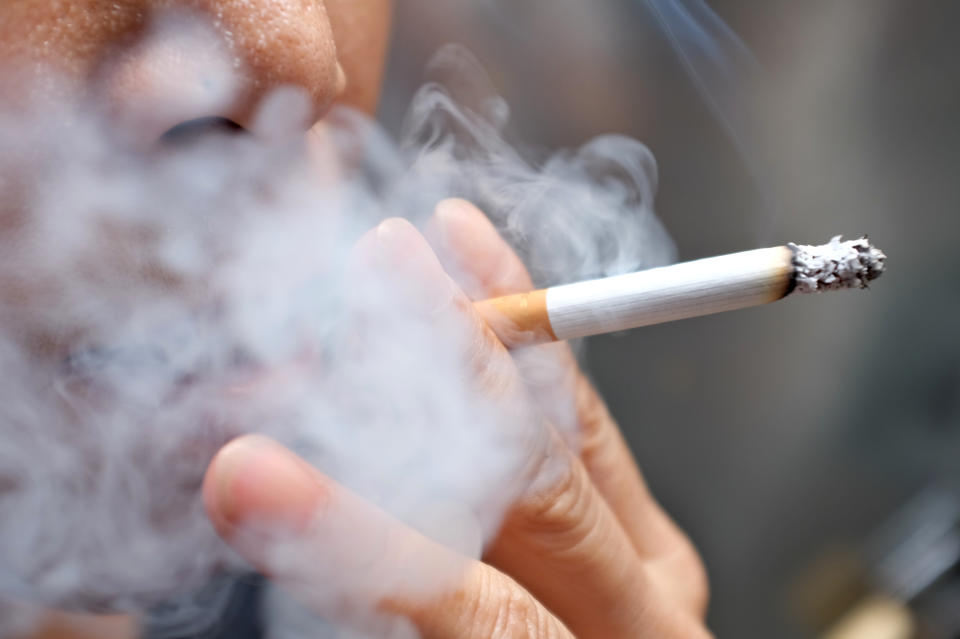Non-smokers 'have sticky tobacco residues lurking in their home'

Non-smokers may have tobacco residues lurking in their home, research suggests.
Concerns over “thirdhand smoke” have been raised in recent years, with chemicals potentially lingering in furniture, carpets and curtains long after someone has lit up.
To learn more, scientists from San Diego State University swabbed doors, counters and shelves in 220 multi-unit apartments.
Read more: Moviegoers bring 'thirdhand smoke' into cinemas
Thirdhand smoke was detected in all the homes, regardless of whether the resident lit up.
One in 10 of the non-smoker homes even had more nicotine residues than those whose owners had the habit.
The scientists warn that chemicals in tobacco are “sticky” and can hang around long after a renter has packed up.
‘Tobacco smoke chemicals accumulate’
“When someone quits smoking or moves, you don't throw out a couch or the carpet, because you don't think about smoke residue, but after decades of smoking, this residue can be 50 times higher than in a new apartment with active smokers,” said study author Professor Georg Matt.
“When you smoke, tobacco smoke chemicals accumulate over time and create these reservoirs that fill slowly and also empty slowly.
“Some of these reservoirs may never be depleted because chemicals are still sticky.”
The scientists collected two swabs from the surfaces of “affordable” apartments in San Diego.
The swabs were analysed for nicotine, a marker of thirdhand smoke.
Results – published in the journal Preventive Medicine Reports – reveal the two complexes with the highest levels of thirdhand exposure were occupied by non-smokers, where bans on lighting up had been in place for up to nine years.
Read more: What is thirdhand smoke?
Some of these tobacco residue levels were comparable to casinos, according to the scientists.
“When you walk in, you may not notice any smell because the volatile compounds that cause the smell are long gone,” said Professor Matt.
The scientists worry smoking bans do not protect residents from thirdhand exposure.
Professor Matt offered this advice: “When you buy used furniture or a used car, you have to ask if previous owners smoked.
“Same way, when you consider renting, ask if previous tenants smoked.
“Some people are under the illusion that if they get rid of the stale tobacco smell, the problem is gone.
“There are companies that offer air cleaners or odour removers, but unfortunately all this does is cover up an odour.”

How could thirdhand smoke harm our health?
Thirdhand smoke is a relatively new area of research.
Scientists from Drexel University in Philadelphia were some of the first to look into whether nicotine residue really does linger.
After analysing an old classroom, they found a “reduced nitrogen component” in 29% of the airborne particles.
The team put this down to “thirdhand smoke components” from “interior surfaces”.
Read more: New mum asks smoker mother-in-law to shower before touching her baby
“In an empty classroom, where smoking has not been allowed in some time, we found 29% of the entire [air particles] contained thirdhand smoke,” said study author Dr Anita Avery.
In a second part of the experiment, the team filled a sealed container with cigarette smoke, which they then “flushed” with outdoor air.
The following day, they pumped filtered air into the container to mimic indoor ventilation.
Despite this, the container still had 13% more harmful substances than the “control boxes”.
The scientists worry humid, circulating air – like that in offices – may “lift” chemicals fixed to surfaces to become airborne.
While nicotine residue may linger all around us, whether it poses any health risks is less clear.
To learn more, scientists from the Lawrence Berkeley National Laboratory in California exposed newborn mice to thirdhand smoke.
This caused the animals to weigh significantly less than unexposed controls.
Thirdhand smoke also “threw off” the mice’s blood make-up.
The newborns had significantly more of the immune-fighting proteins oesophils, suggesting their immune system had been activated.
Their platelets, which cause blood to clot when the skin is cut, also went down.
The scientists concluded “thirdhand smoke exposure may have adverse effects on human health”.
When it comes to humans, babies and toddlers could be worst affected.
Dr Jonathan Winickoff, from the Harvard Cancer Center, told Scientific American: “The developing brain is uniquely susceptible to extremely low levels of toxins.”
The paediatrician also warned a child’s height puts them closer to smoke residues in carpets or furniture.
“They tend to touch or even mouth the contaminated surfaces,” he said.
Scientists from Massachusetts General Hospital claim children ingest up to 0.25g (0.0005lb) of dust a day, more than twice that of adults.
The same team looked into whether the public believe thirdhand smoke exists.
They asked 1,478 people, 273 of which were smokers, if they thought smoke residues harm children.
Less than half (43%) of the smokers answered “yes”, compared to 65% of the non-smokers.

 Yahoo Sport
Yahoo Sport 





































